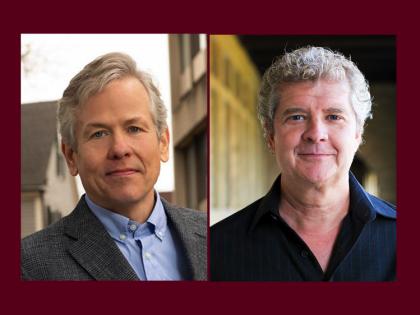
Drawing from Audubon: Early Drawings, Harvard University Press. ©2008 by the President and Fellows of Harvard College. All rights reserved.
A belted kingfisher, drawn in 1808, is precise and detailed but stiff.
Jean-Jacques Audubon did not become the internationally celebrated John James Audubon of The Birds of America overnight. Indeed, his early life was harrowing, and his progress as an artist labored and fitful.
As it happens, Harvard’s collections contain some of his earliest works as a naturalist: 116 drawings held in Houghton Library and the Museum of Comparative Zoology (MCZ). Harvard University Press has just published them, in large format and full color for the first time, as Audubon: Early Drawings ($125). The works are also available on line through the University Library’s archival search system (search for “Audubon” at http://oasis.harvard.edu).

Drawings from Audubon: Early Drawings, Harvard University Press. ©2008 by the President and Fellows of Harvard College. All rights reserved.
A whippoorwill and a nighthawk (below), drawn on successive days in May 1812, show evolution toward more dynamic, lifelike poses.

Explaining the collection’s provenance in the foreword, Leslie A. Morris, Houghton’s curator of modern books and manuscripts, highlights Audubon’s use of watercolor and then pastels, and his evolution from “traditional ornithological presentation, depicting the bird in profile and with little or no background” toward the prized “naturalistic style.” Among examples of the former, Scott V. Edwards cites renderings of a black-bellied plover and a hawfinch, with the “telltale shift in perspective between body and tail (body viewed from the side, tail from the top),” that gradually give way to “more dynamic and lifelike poses” such as those of a gray catbird.
Edwards, who is professor of organismic and evolutionary biology and curator of ornithology in the MCZ (see “Harvard Portrait,” July-August 2004, page 56), contributes an engaging essay on “Audubon the Scientist,” with an almost wistful review of his use of sources spanning prior centuries—in contrast to modern science, when most papers “become irrelevant after a few years.” Edwards also points out the quality of Audubon’s field notes and documentation, and even the value of his work for documenting over time both vast habitat change (as America was de- and reforested) and the rapidity of avian evolution.
“The Sources of Audubon’s Art,” by Richard Rhodes, author of John James Audubon: The Making of an American, rounds out the front matter with a succinct account of the subject’s eventful life.
Thus the one volume encompasses the allurements of collecting, of science old and new, and of biography. The new perspectives on Audubon’s development will likely add to a fundamental passion that, as Morris notes, the artist himself described thus:
The study of ornithology must be a journey of pleasure. Each step must present to the traveler’s view objects that are eminently interesting, varied in their appearance, and attracting to such a degree, as to excite in each individual thus happily employed the desire of knowing all respecting all he sees.







